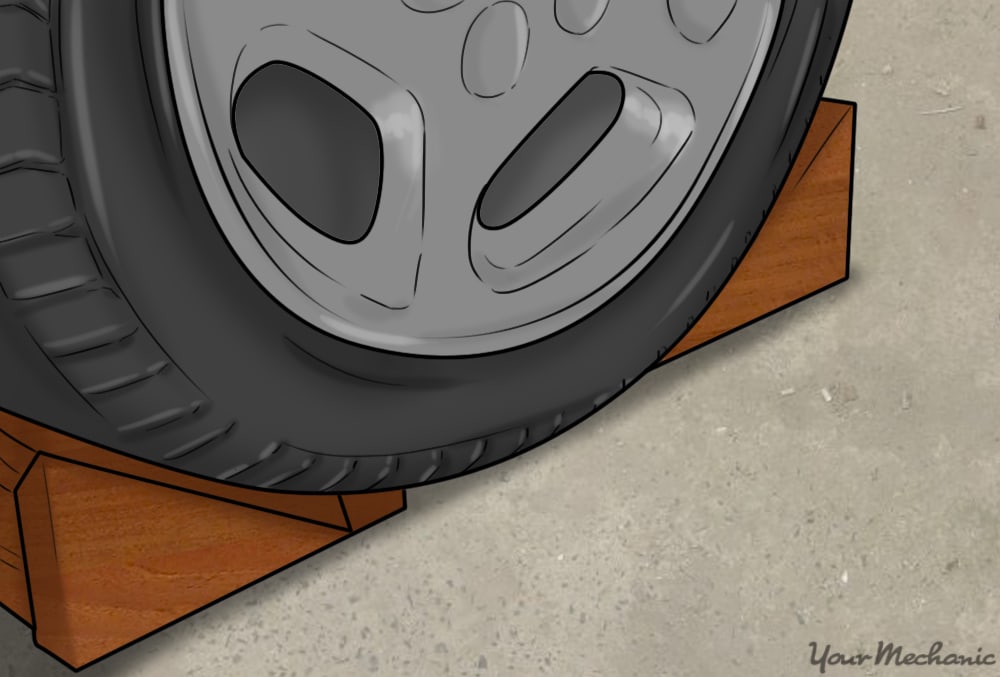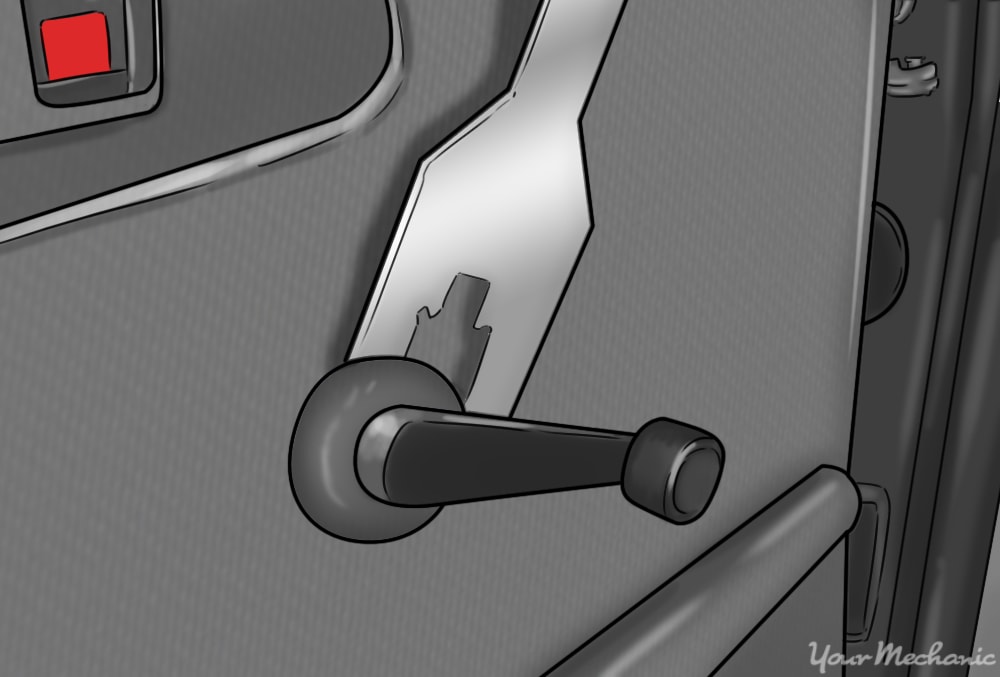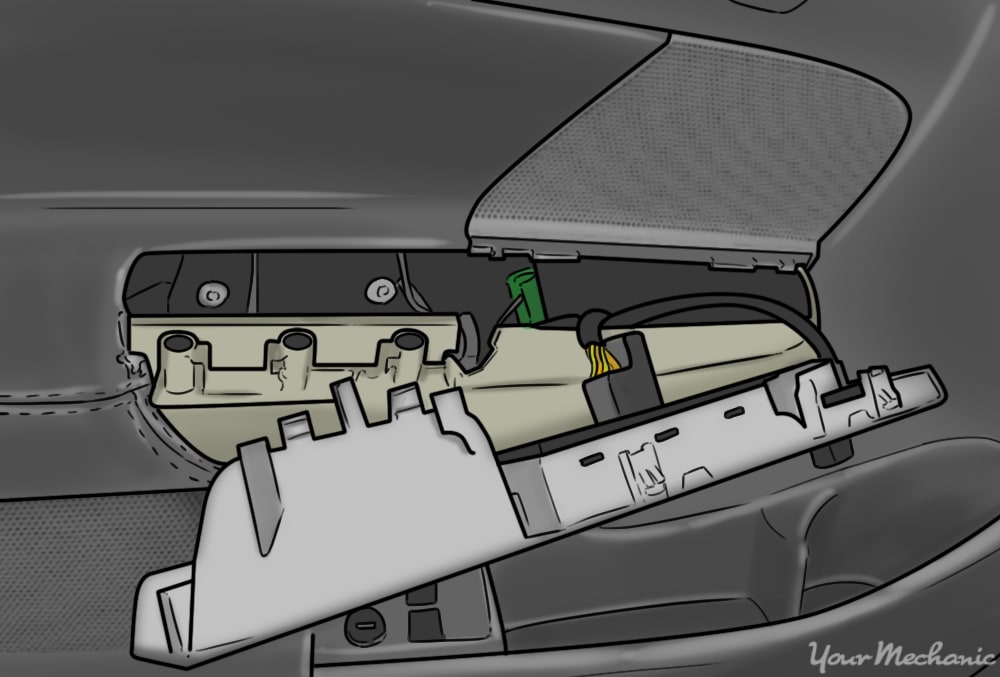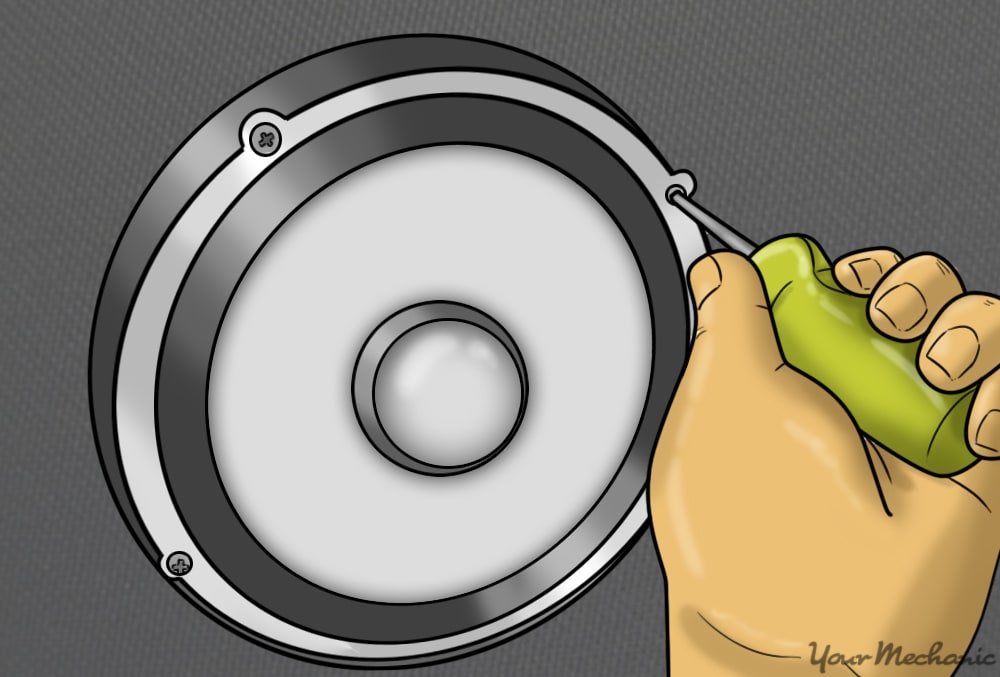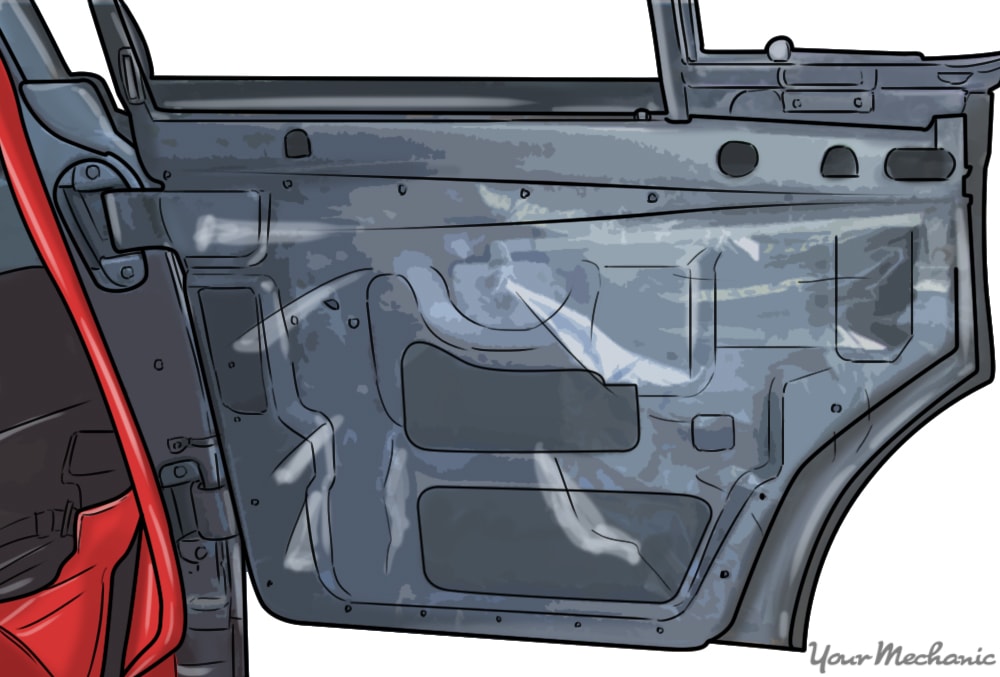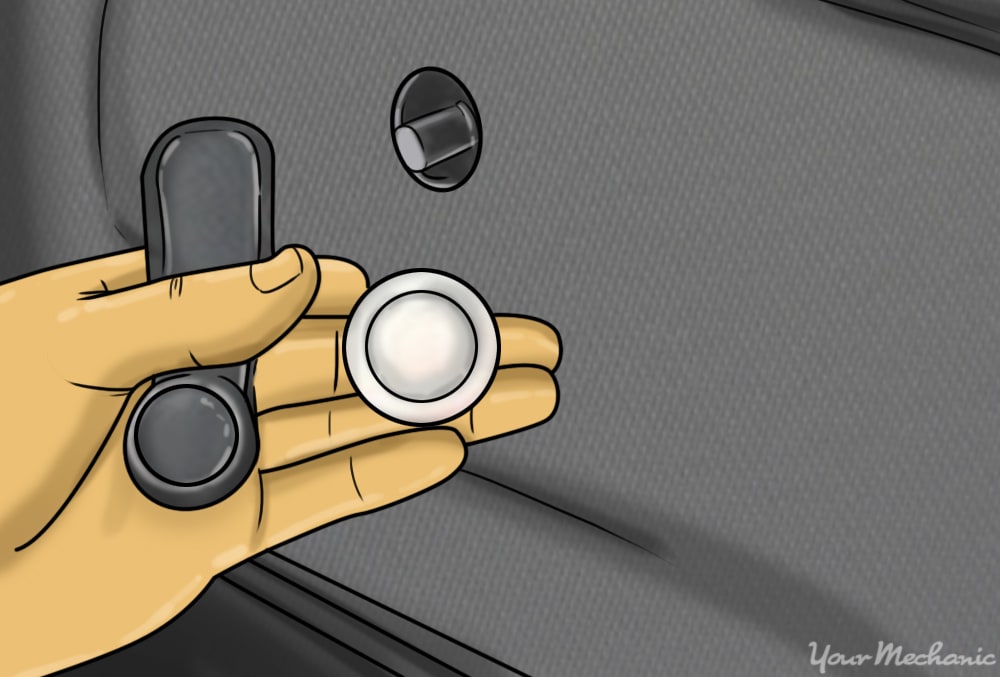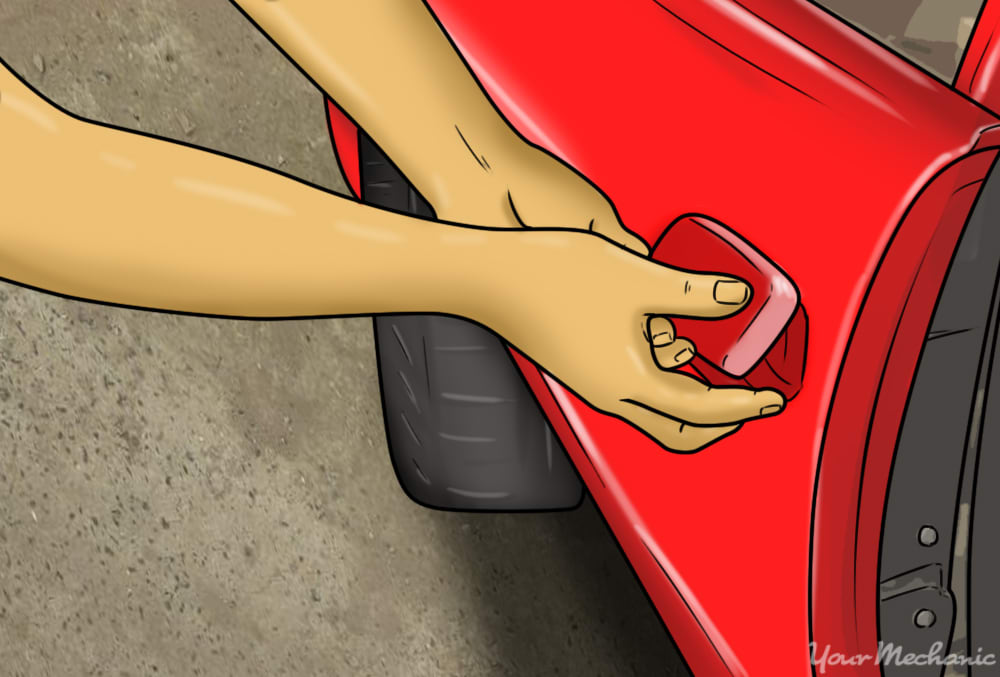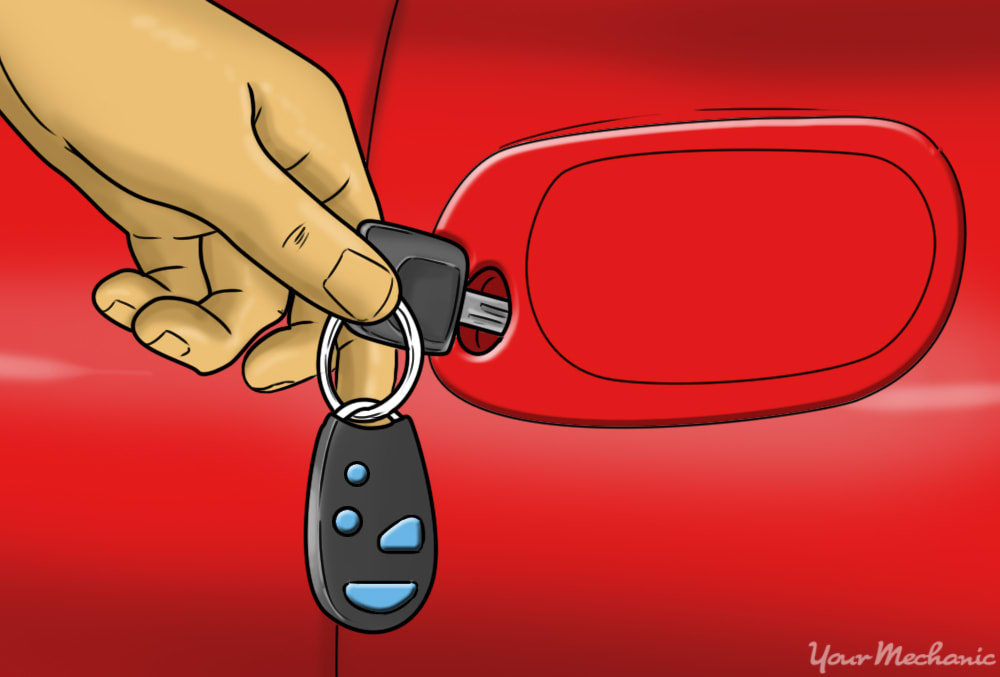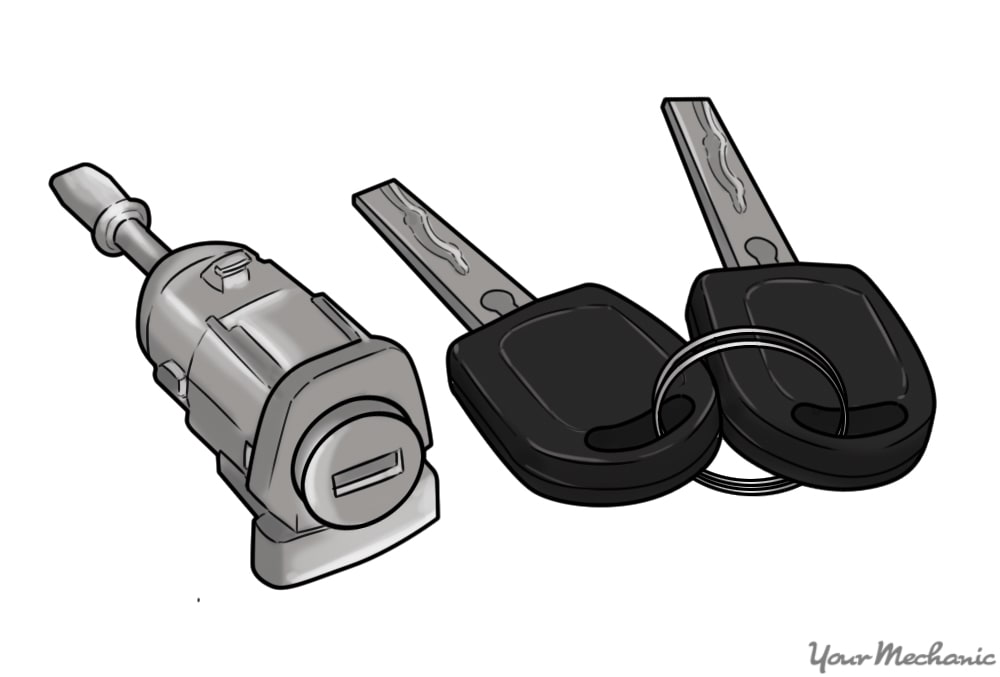

The door lock cylinders on the doors of your car are not just there to protect you and your family while you’re in the vehicle. They also protect the vehicle itself from theft.
Whenever you turn the key in the driver or passenger side door, the door’s latch mechanism should either lock or unlock the door. However, a worn-out cylinder can make it hard to lock or unlock. In extreme cases, the cylinder will either not release the key or cause the key to break off in the door.
- Note: Keep in mind that when you change the door lock cylinder, you need to get a new one from the manufacturer that has the same key cut as your old one. If you are unable to obtain a lock cylinder with the same vin as your vehicle, you would then need to also replace the ignition tumbler and the lock cylinder in the trunk, if your vehicle is equipped with a trunk.
Part 1 of 5: Verifying the condition of the door lock cylinder
Materials needed
- Ratchet with metric and standard sockets
- Cross tip, or Phillips head, screwdriver
- Door panel remover
- Flat head screwdriver
- Needle nose pliers
- New door lock cylinder specific to your vehicle
- Torques bit set
- Wheel chocks
Step 1: Locate the door with the faulty door lock cylinder. Visually inspect the damaged, stuck, or broken door lock cylinder for any exterior damage.
Lift up on the door handle to see if there is any binding of the mechanism within the door. This confirms that the lock cylinder has failed and not the linkages inside the door.
Step 2: Unlock and open the affected door. Get into the vehicle from another door if the door you are working on will not open. Unlock and open the door with the broken, stuck, or damaged door lock cylinder from the inside of the vehicle.
Step 3: Manually lock the affected door and test it. Lock it by pushing on the latch on the side of the door. Try operating the damaged lock cylinder by putting the key into the lock and turning it to unlock the door.
Part 2 of 5: Preparing the vehicle
Step 1: Park your vehicle on a flat, hard surface. In order to safely work on your car, it cannot be on an incline. Find a flat, hard surface on which to work.
Step 2: Place wheel chocks around the tires. Engage the parking brake and put wheel chocks in place to the keep the tires from moving.
Step 3: Install a nine-volt battery saver. If your vehicle has electronic door locks, you will need to disconnect the car battery. Before doing so, plug a nine-volt battery saver into your cigarette lighter.
This will keep your computer live and keep your settings current in the vehicle. If you do not have a nine-volt battery saver, though, that’s okay.
Step 4: Disconnect the battery. Open your vehicle’s hood in order to take the ground cable off of the battery’s negative post; this will disable the power to the air-to-fuel ratio sensor.
- Tip: If you have a hybrid vehicle, refer to the owner’s manual for instructions on disconnecting the small battery only.
Once you’re done disconnecting the battery, close the hood.
Part 3 of 5: Removing the old door lock cylinder
Step 1: Unlock the affected door. To begin, unlock the door where you will be replacing the door lock cylinder, either by using your key or using the inside door lock.
Step 2: Remove the window crank. After first making sure that the window is fully closed, remove the window crank.
Pry up the plastic cover on the handle (the handle is a metal or plastic arm with a metal or plastic clip). Remove the cross tip, or phillips, head screw holding the handle to the shaft.
Then pull the handle off. A large plastic washer will come off with the handle. Take notes or a picture in order to remember which way this is supposed to sit against the door.
Step 3: Remove the door lock cluster panel. If your vehicle has electronic door locks, you will need to remove the door lock cluster panel from the door panel as well.
When removing the cluster panel, you need to remove the screws attaching it to the door panel. If the cluster is unable to be detached, you may be able to disconnect the harness connectors under the door panel as you pull this off in a later step.
Step 4: Remove any externally mounted speakers. Prior to removing the door panel, any speakers would need to be removed for those vehicles that have custom speakers externally mounted on the panel.
Step 5: Remove the panel on the inside of the door. Gently pry the panel away from the door all the way around.
A flat screwdriver or a door panel remover (preferred) helps here, but be gentle so you don’t damage the painted door around the panel.
Once all the clips are loose, grab the panel top and bottom and bend it slightly away from the door. Lift the whole panel straight up to lift it clear of the catch behind the door handle.
- Note: As you do this a large coil spring will fall out. This spring sits behind the window crank handle, and it will be somewhat tricky to get back into place when you reinstall the panel.
Step 6: Remove part of the plastic sheeting. Pull the plastic sheeting away from the rear half of the door. If you do this gently, you’ll be able to reseal the plastic later.
Note: This plastic is essential in forming a water barrier inside the door panel, which is necessary because some water always gets into the inside of the door during rainy days or car washes.
Tip: While you are peeling back the plastic barrier, you can also check that the two drain holes in the bottom of the door are clear and that there is no buildup of debris in the bottom of the door.
Step 7: Remove the door lock cylinder. First slide your hand up to the back of the cylinder and use a pair of needle nose pliers to pull off the bracket clip holding the door lock cylinder in place. Then pull the cylinder out of the door from the outside (pushing from the inside if needed).
Step 8: Remove the piece that connects the cylinder to the lock indicator stem. To do this, you will need to pull up the three small tabs with needle nose pliers and detach to the remaining smaller bracket from the back of the cylinder.
Part 4 of 5: Installing the new door lock cylinder
Step 1: Assemble the new door lock cylinder. Piece together the new door lock cylinder like the old one by putting the rubber gasket on the part of the cylinder that fit on the outside of the car door.
Push the new small bracket onto the cylinder to hold the gasket in place.
Step 2: Insert the new lock assembly. Put the complete lock assembly into the hole in the door and align it with the cylinder slot.
Step 3: Connect the door lock cylinder. Replace the big bracket that holds the door lock cylinder tight to the inside of the door.
Step 4: Install the piece that connects the cylinder to the lock indicator stem. Use needle nose pliers to push down the three small tabs and attach the remaining smaller bracket to the back of the cylinder.
Step 5: Replace the barrier. Place the plastic sheeting back against the rear half of the door and reseal it.
Step 6: Replace the door panel. Reinstall the spring that sits behind the window crank, and then set the whole panel straight onto the door and slide it over the locking knob. Be sure not to move the spring.
Place all of the panel clips into the holes in the door and with a firm tap, snap all of the clips back in.
Step 7: Reinstall the door lock cluster panel if applicable. If your vehicle has electronic door locks, you will need to reinstall the door lock cluster panel into the door.
Install the screws attaching the cluster to the panel, then make sure the cluster is connected to the wiring harness. You may have to attach the connectors under the door panel before you replace the door panel onto the door.
Step 8: Replace any externally mounted speakers if applicable. If the vehicle has custom speakers that are externally mounted on the door panel, these speakers will need to be installed back onto the door panel.
Step 9: Reinstall the window crank. Position the handle in place with the large plastic washer and reinstall the plastic cover.
Reinstall the screws that connect the handle to the shaft and secure them. Turn the window crank to ensure that the window can move up and down. Install the plastic rim around the handle.
Step 10: Install the outer door handle. Pull the handle forward to release it and install it into the door. Install the two screws that will hold the door handle to the door shell.
Part 5 of 5: Reconnecting the battery and testing the cylinder
Step 1: Reconnect the battery. Open the vehicle’s hood and reconnect the ground cable back onto the battery’s negative post. Tighten the battery clamp up tight to ensure that the connection is good.
Remove the nine-volt battery saver from the cigarette lighter.
Step 2: Test the new door lock cylinder. Test the new door lock cylinder by locking and unlocking the door with your key.
Lock and unlock it with the door open and with the door closed. This ensures that the connection between the door lock cylinder and the door latch is working.
If you have electronic door locks but have a key lock cylinder, check to see if the outside handle locks by using a key in the door lock cylinder and by pushing down onto the inside lock button. You can do this with the window down so you don’t have to enter the vehicle.
If your door will not open even after replacing the door lock cylinder, then there may be a deeper issue with the door lock cylinder assembly or a possible electronic component failure in the case of vehicles with electronic door locks. If the problem persists, or if you’re not comfortable performing a repair like this yourself, you can always seek out help from a certified mechanic, such as one from YourMechanic, who can inspect and address your door lock for you.




